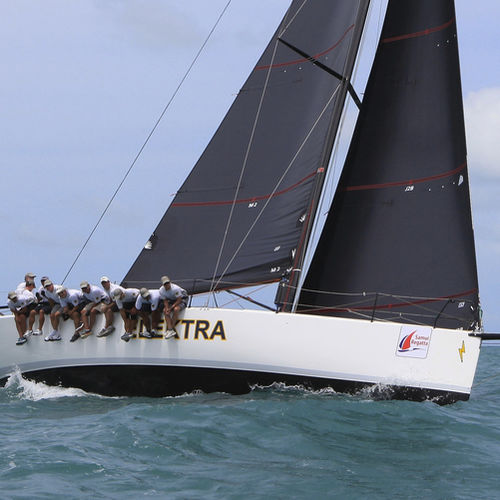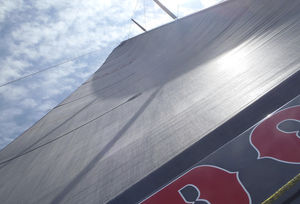
- Sailing
- Sailing Equipment and Gear
- Mainsail
- UK-Halsey International
Mainsail Titaniumfor regatta sailboatscarbonfull-batten
Add to favorites
Compare this product
fo_shop_gate_exact_title
Characteristics
- Type
- mainsail
- Applications
- for regatta sailboats
- Material
- carbon
- Other characteristics
- full-batten
Description
UK Sailmakers pioneered loadpath sails with the Tape-Drive® construction method three decades ago. In loadpath sails the aerodynamic loads are transferred from the sail’s cloth (usually a mylar film or skin) and seams to bundles of high strength yarns that run continuously between the corners of the sail.
Titanium® sails are made with a grid of continuous carbon loadpath yarns running unbroken between the three corners of the sail; those yarns are laminated between two layers of 3D-shaped film. In the Titanium construction process, the yarns are laid dry–without glue–to reduce weight and to prevent the carbon yarns from becoming brittle.
Furthermore, not coating the yarns with glue makes for lighter, more flexible, and more durable sails (by 15-30%), which makes happier foredeck teams and happier owners who are not replacing their misshaped and broken sails as often.
The outer mylar films are the epidermis of the Titanium sail that protect and hold all the layers together. Shiny and weatherproof on the outside, the black or grey PET skins are tacky on the inside from the copolymer coating; this holds the yarns and films in place until the final lamination has been completed.
The PET film is a key element to this sandwich: at only 1.3 micrometers thick, this material is incredibly tough; PET is most familiar for its use in plastic bottles and in some paper currencies; try tearing either of these apart. Sunlight and heat up to 50°C/120°F does nothing to PET, not even making it shrink like many similar materials.
Catalogs
*Prices are pre-tax. They exclude delivery charges and customs duties and do not include additional charges for installation or activation options. Prices are indicative only and may vary by country, with changes to the cost of raw materials and exchange rates.






